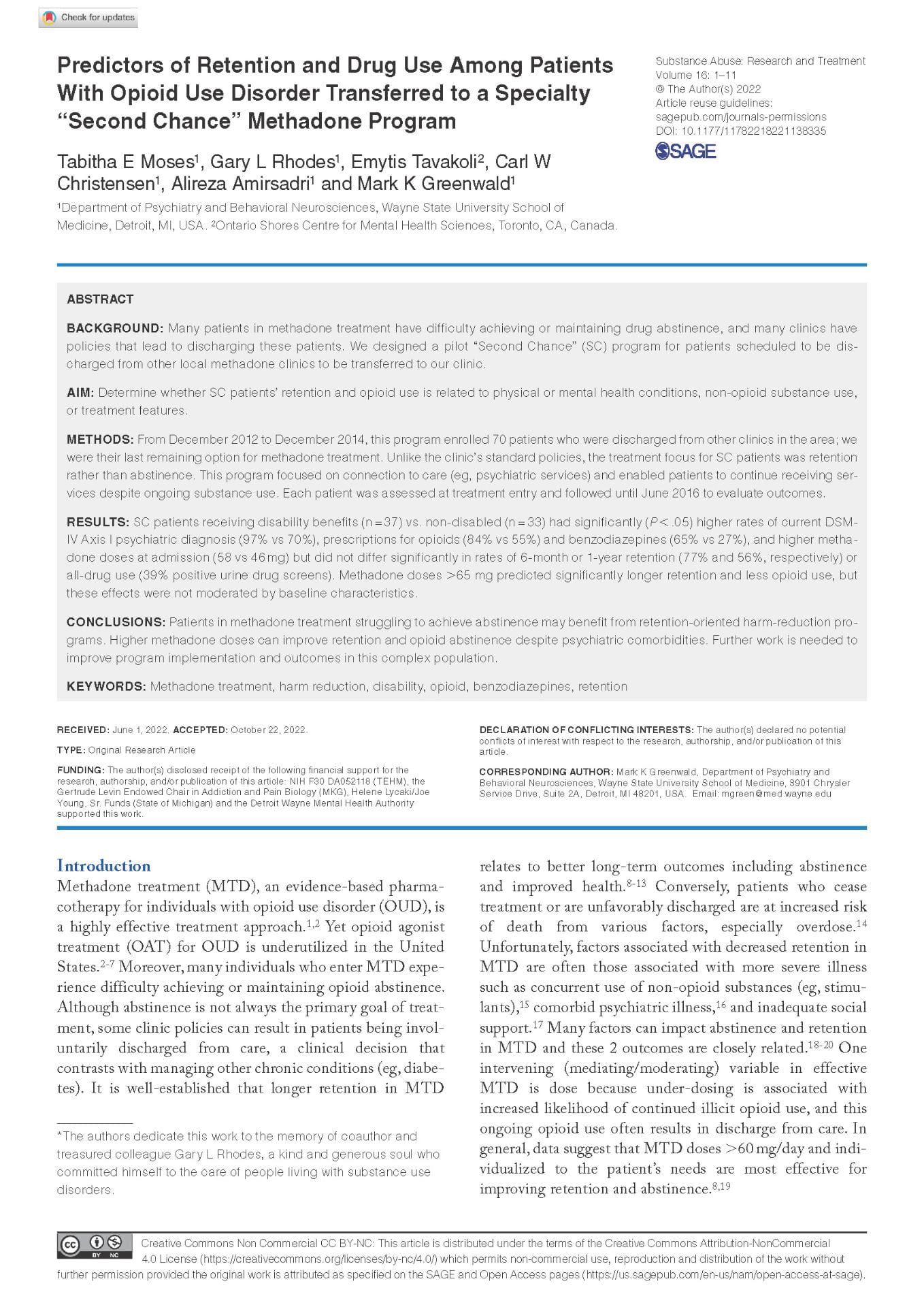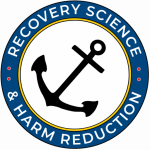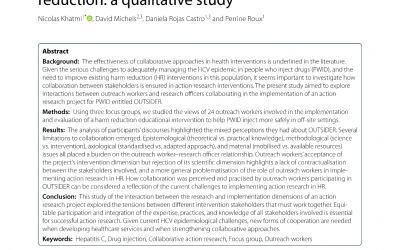Article
Moses TE, Rhodes GL, Tavakoli E, Christensen CW, Amirsadri A, Greenwald MK. Predictors of Retention and Drug Use Among Patients With Opioid Use Disorder Transferred to a Specialty " Second Chance" Methadone Program. Subst Abuse. 2022 Nov 15;16:11782218221138335. doi: 10.1177/11782218221138335. PMID: 36407024; PMCID: PMC9669697.
Article Summary
One of the main barriers to treatment for people in recovery from substance use disorder is that many treatment programs require participants’ sobriety. Getting and staying sober, that is not using any drugs or alcohol, can be challenging for people in various stages of recovery. The researchers in this study designed a “Second Chance” methadone treatment program for people who had been discharged from other treatment programs. This “Second Chance” program focused more on keeping people in treatment versus keeping people substance-free. The goal of this study was to find out why people in the “Second Chance” program might stay in the program and/or continue to use opioids. This study enrolled 70 people between 2012 and 2014 and followed them until 2016. Researchers found that people who entered the study on higher doses of methadone stayed in treatment for longer periods of time and had less opioid use, even if these people had higher rates of mental illness. In general, this study showed that people in methadone treatment who struggle to be abstinent from substances may be helped by treatment programs that prioritize keeping people in treatment over sobriety and that higher methadone doses can help people to stay in treatment and to not use opioids.


